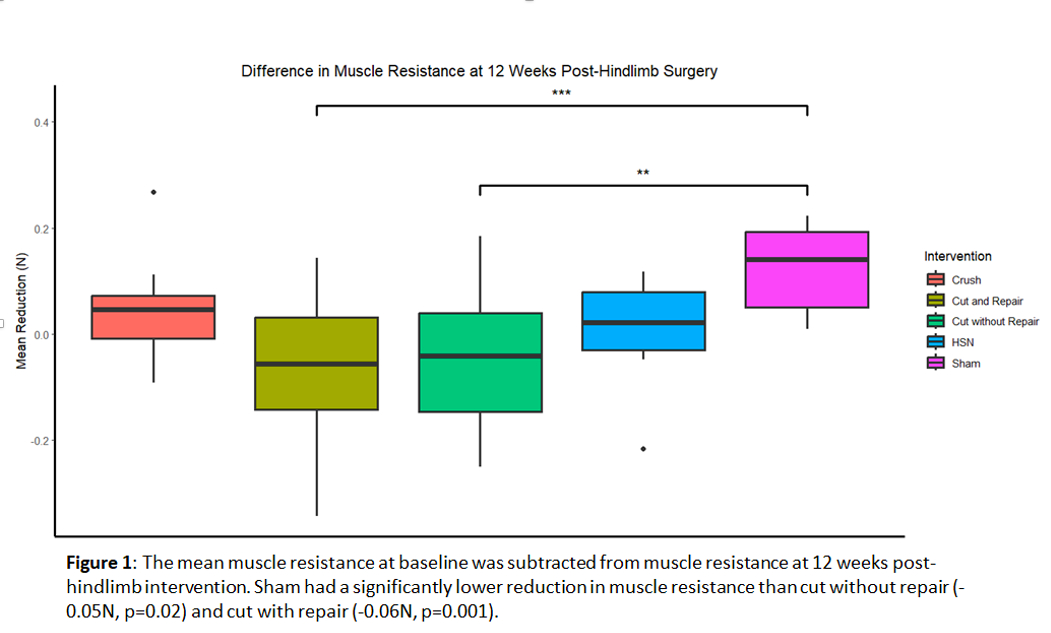Evaluating surgical alternatives to hyperselective neurectomy in a rat model of spinal cord injury
Zohra V. Aslami*, Aidan Weitzner, William Padovano, Emma Rowley, Ethan Wu, Cameron Ghergherehchi, Rachana Suresh, Erica B. Lee, Sami Tuffaha
Johns Hopkins University School of Medicine, Baltimore, MD
Hyperselective neurectomy (HSN) is an emerging treatment option for spasticity. However, its underlying mechanisms and treatment effects are poorly understood. Previous evidence suggests that deafferentation of the stretch reflex may play a significant role. If so, nerve crush or transection with primary repair could effectively leverage this mechanism while reducing the operative complexity and morbidity associated with HSN. This study aimed to compare these procedures against HSN as a therapy for spastic muscle tone in a rodent model of spinal cord injury.
A total of 90 rats underwent complete T8 spinal transection. Six weeks after injury, rats were randomized into 5 groups: sham (n=18), transection-without-repair of the tibial nerve (n=18), transection with primary epineural repair of the tibial nerve (n=19), tibial nerve crush (n=18), and HSN of nerves to the lateral and medial gastrocnemius and soleus (n=17). Resistance to ankle dorsiflexion and H-reflex was measured at 0, 2, and 12 weeks following hindlimb surgery. Modified-Ashworth scale (MAS) was assessed at 2 and 12 weeks in bilateral hindlimbs. Changes in muscle spindle innervation and VGLUT1 density in the spinal cord were analyzed . Groups were compared via one-way ANOVA and Kruskal-Wallis test where appropriate.
At 12 weeks, both nerve transection-without-repair and transection-with-repair demonstrated reduced muscle resistance relative to sham (mean reduction 0.05N, p=0.02 and 0.06N, p=0.001 respectively). MAS scores were also lower in the treated hindlimb after transection without repair and transection with repair relative to sham (mean reduction 3.00, p=0.0004 and 2.92, p=0.04). In contrast, nerve crush and HSN did not demonstrate reductions in spastic tone.
Tibial nerve transection with primary epineural repair resulted in significant reduction in spastic muscle tone in a rat model of spinal cord injury. Peripheral nerve transection with primary epineural repair may offer a more efficient and effective surgical option for treatment of muscle spasticity when compared to hyperselective neurectomy.
Differences in muscle resistance at 12 weeks post-hindlimb surgery
Back to 2023 Abstracts


